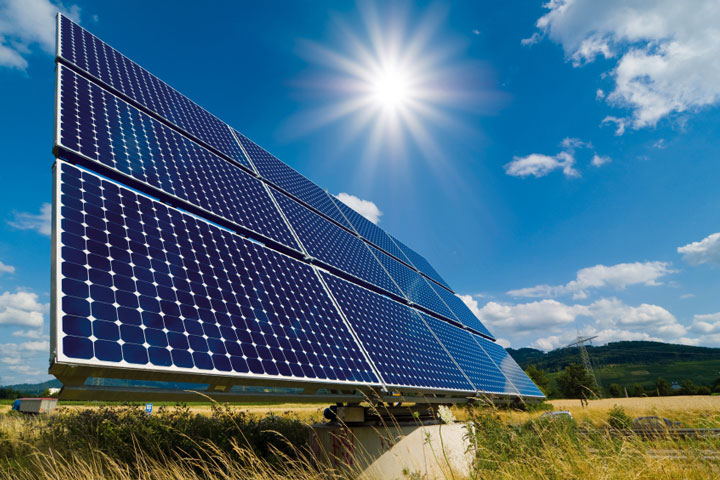
   |

The Costs of Solar Energy to the Environment
Solar energy is widely seen as a crucial means of reversing climate change by replacing fossil fuels with renewable sources. Drought-stricken California has been particularly aggressive in its use. But installations like Ivanpah generating station in the Mojave Desert, above, have created controversy as well as energy, with some questioning the environmental harm these enormous arrays can create. As the use of alternative energy increases, can huge solar installations contribute efficiently and safely?
* crucial = 중대한, 결정적인/ means = 수단/ reverse = 뒤바꾸다, 반전[역전]시키다/ fossil fuel = 화석 연료/ renewable source = 재생 가능 자원/ drought-stricken = 가뭄으로 고통받는/ installation = 설치[설비]/ array = 집합체[모음/무리]; 배열/ cornucopia = (좋은 것들이 가득 찬) 보고; 풍요의 뿔 ![]() 대체 에너지의 사용이 증가함에 따라 대형 태양 설비는 효율적이고 안전하게 기여할 수 있나요?
대체 에너지의 사용이 증가함에 따라 대형 태양 설비는 효율적이고 안전하게 기여할 수 있나요?
1. Don’t Ignore a Solar Cornucopia
If we’re serious about shifting to renewable energy, we need to regard our open lands as a valued energy resource, not a no-go zone.
2. Federal Lands Are Being Ruined for Inefficient Solar Energy
Utility-scale solar and wind generating plants are transforming ecologically rich lands into industrial facilities, privatizing vast areas of public land.
3. Solar Power Can Have a Major Impact Without Major Harm
New tools and scientific planning allow us to prioritize where we put solar energy to create a successful blueprint for exploiting the sun.
Sample Essay
Don’t Ignore a Solar CornucopiaDon’t Ignore a Solar Cornucopia
America’s vast land resources are a solar cornucopia that we would be foolish to ignore. Converting a minute fraction of our non-urban lands to solar power generation will move us substantially toward a post-carbon future.
According to the National Renewable Energy Laboratory, solar panels on building rooftops can provide about a fifth of our total power needs, assuming the owners of all buildings well-suited to solar decide to invest in this technology. Further extending the sun’s reach will require the smart and selective use of our land resources.
By building utility-scale solar plants on farmland, we can take advantage of lands already altered from their natural state. Water-hungry cotton was harvested this year on 160,000 acres in drought-stricken California. Across the country, 88 million acres were planted in corn, heavily reliant on fuel, fertilizer and pesticide inputs. Would converting a small portion of these fields to solar development harm or help the environment?
Farmers in states as diverse as Minnesota, Maryland and North Carolina are opting for solar on some of their fields. Leasing out land for solar development is a good business proposition where soils are exhausted or crops yield too little value.
With appropriate care, solar can be built on open lands with minimal wildlife disruption. The California Valley Solar Ranch, east of San Luis Obispo, now draws enough power for 100,000 households from 1,400 acres of solar panels. Prior to construction, a team of biologists identified and relocated sensitive species such as the San Joaquin kit fox and the giant kangaroo rat. Afterwards these animals were reintroduced to the project area, and migratory corridors were created between solar fields to allow antelope and elk to pass unimpeded. As an added measure negotiated with environmental groups, 12,000 acres of nearby land were set aside for conservation in perpetuity. How many farmers have gone to such lengths to protect biodiversity?
The Department of Interior has laid out Solar Energy Zones in six southwestern states, identifying 285,000 acres of public lands well-suited to solar power. While it is unclear how much of this land will actually be developed for solar, it pales by comparison to the 35 million acres of federal land now leased for oil and gas exploration. It’s also considerably less than the 475,000 acres currently leased by the government for coal mining.
If we’re serious about shifting America’s power base to renewable energy, we need to regard our open lands as a valued energy resource, not a no-go zone. It is a far better alternative to extracting and burning fossil fuels that damage our environment, endanger public health and destabilize our global climate.
   |




